The Wind Rises
8 /10 1 Votes
Country Japan | 7.8/10 IMDb Genre Animation, Biography, Drama Duration | |||||||||||||||||||||||||||||||||
 | ||||||||||||||||||||||||||||||||||
Language JapaneseEnglishGermanItalian Release date July 20, 2013 (2013-07-20) (Japan) Writer Hayao Miyazaki (comic), Hayao Miyazaki (screenplay), Mike Jones (screenplay) Awards Japan Academy Prize for Animation of the Year Cast (Jirô Horikoshi (voice)), (Hattori (voice)), (Kayo Horikoshi (voice)), (Naoko Satomi (voice)), (Honjô (voice)), (Jirô Horikoshi (voice: English version)) Similar movies The Wolf of Wall Street , Good Will Hunting , (500) Days of Summer , Desire , Independence Day , Salt Tagline We must live. | ||||||||||||||||||||||||||||||||||
The wind rises from hayao miyazaki official uk trailer
The Wind Rises (Japanese: 風立ちぬ, Hepburn: Kaze Tachinu) is a 2013 Japanese animated historical drama film written and directed by Hayao Miyazaki and animated by Studio Ghibli. It was released by Toho on July 20, 2013, in Japan, and by Touchstone Pictures in North America on February 21, 2014.
Contents
- The wind rises from hayao miyazaki official uk trailer
- Plot
- Development
- Music
- Release
- Home media
- Box office
- Critical response
- Controversy
- Accolades
- References
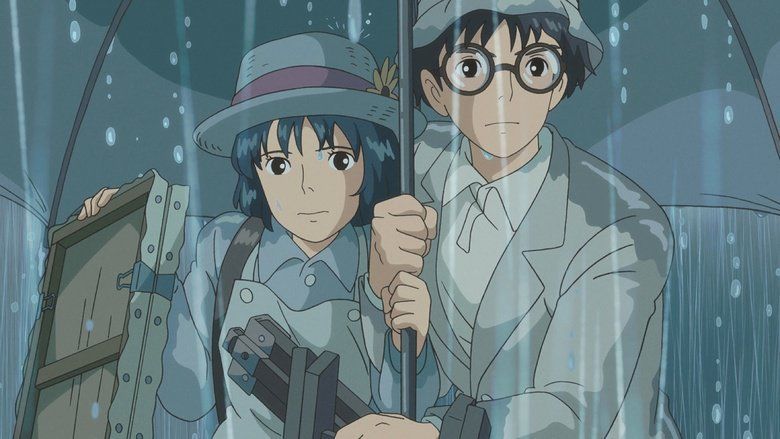
The Wind Rises is a fictionalized biopic of Jiro Horikoshi (1903–1982), designer of the Mitsubishi A5M fighter aircraft and its successor, the Mitsubishi A6M Zero, used by the Empire of Japan during World War II. The film is adapted from Miyazaki's manga of the same name, which was in turn loosely based on the 1937 short story The Wind Has Risen by Tatsuo Hori. It was the final film directed by Miyazaki before his retirement in September 2013.

The Wind Rises was the highest-grossing Japanese film in Japan in 2013 and received widespread critical acclaim. It won and was nominated for several awards, including nominations for the Academy Award for Best Animated Feature, the Golden Globe Award for Best Foreign Language Film, and the Japan Academy Prize for Animation of the Year.
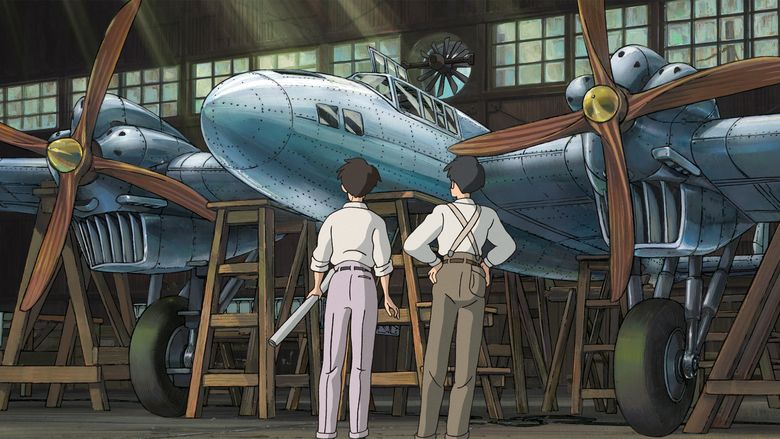
Plot
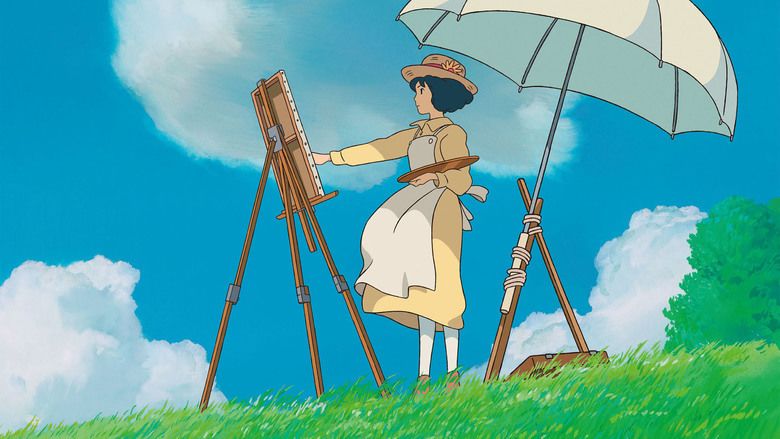
In 1918, a young Jiro Horikoshi longs to become a pilot, but his nearsightedness prevents it. He reads about the famous Italian aircraft designer Giovanni Battista Caproni, and dreams about him that night. In the dream, Caproni tells him that he has never flown a plane in his life, and that building planes is better than flying them.

Five years later, Jiro is traveling by train to study aeronautical engineering at Tokyo Imperial University and meets a young girl, Nahoko, traveling with her maid. When the Great Kanto Earthquake of 1923 hits, Nahoko's maid's leg is broken and Jiro carries her to Nahoko's family, leaving without giving his name.

In 1927, Jiro graduates with his friend Kiro Honjo and both are employed at aircraft manufacturer Mitsubishi and are assigned to design a fighter plane, the Falcon, for the Imperial Army. During tests, the Falcon breaks apart in mid-air and the Army rejects it. Dispirited about the seeming backwardness of Japanese technology, Jiro and Honjo are sent to Germany in 1929 to carry out technical research and obtain a production license for a Junkers G.38 aircraft. Jiro sees Hugo Junkers, argues with German guards and witnesses a minor Jew hunt. He dreams again of Caproni, who tells him that the world is better for the beauty of planes, even if humankind might put them to ugly purposes.
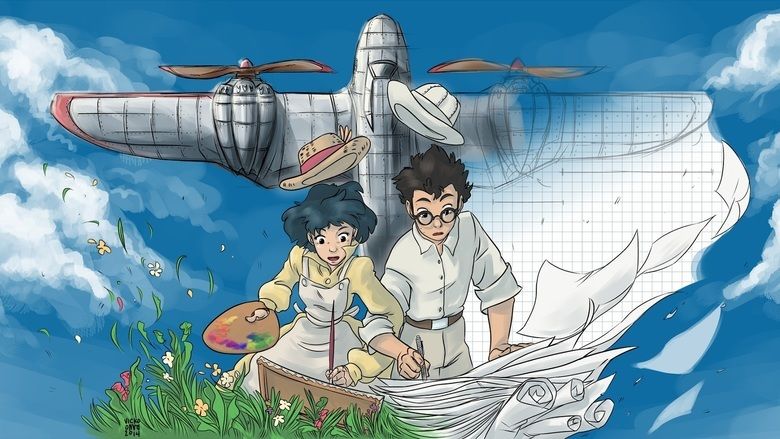
In the spring of 1932, Jiro is promoted to chief designer for a fighter plane competition sponsored by the Imperial Navy, but his design, the Mitsubishi 1MF10, fails testing in 1933 and is rejected. Disappointed, Jiro goes to a summer resort in Karuizawa to rest, where he meets Nahoko again. They become engaged, but Nahoko has tuberculosis and refuses to marry until she recovers. Castorp, a German visitor privately critical of the Nazi regime, assists in the romance before fleeing arrest by the Japanese secret police.
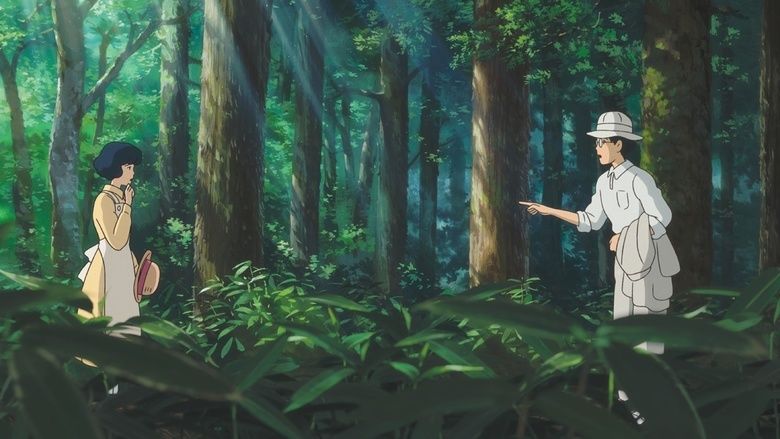
Wanted in connection with Castorp, Jiro hides at his supervisor's home while he works on a new navy project. Following a lung hemorrhage, Nahoko recuperates in an alpine sanatorium but cannot bear being apart from Jiro, and returns to marry him. Jiro's sister Kayo, a doctor, warns Jiro that his marriage to Nahoko will end badly as tuberculosis is incurable. Though Nahoko's health deteriorates, she and Jiro enjoy their time together.
Jiro leaves for the test flight of his new prototype aircraft, the Mitsubishi A5M. Knowing that she will die soon, Nahoko returns to the sanatorium, leaving letters for Jiro, her family, and friends. At the test site, Jiro is distracted from his success by a gust of wind, suggesting Nahoko's death.
In the summer of 1945, Japan has lost World War II and has been devastated by air raids. Jiro again dreams of meeting Caproni, telling him he regrets his aircraft were used for war. A group of Zeros fly past and their pilots salute Jiro. Caproni comforts him, saying Jiro's dream of building beautiful aircraft was nonetheless realized. Nahoko appears, exhorting her husband to live his life to the fullest.
Development
The Wind Rises was directed by Hayao Miyazaki, whose previous films include My Neighbor Totoro, Princess Mononoke, and Spirited Away. It was the first film that Miyazaki solely directed since Ponyo in 2008.
Miyazaki began to conceive a story to illustrate the life of Jiro Horikoshi in 2008. He published the story as a manga series in the monthly magazine Model Graphix from April 2009 to January 2010, with the title borrowed from Tatsuo Hori’s novel The Wind Has Risen (風立ちぬ). The story in the manga follows the historical account of Horikoshi's aircraft development up to 1935 (the year of the Mitsubishi A5M maiden flight), and intertwines with fictional encounters with Caproni and Nahoko Satomi (里見菜穂子). The scenes with Nahoko in the manga were adopted from the novel The Wind Has Risen, in which Tatsuo Hori wrote about his life experience with his fiancée, Ayako Yano (矢野綾子), before she died from tuberculosis. The name Nahoko Satomi was borrowed from the female protagonist of another novel by Tatsuo Hori, Nahoko (菜穂子). Characters frequently discuss Thomas Mann's novel The Magic Mountain, and, in a letter to Nahoko, Jiro names his fleeing German friend "Mr. Castorp" after its protagonist. The character himself is a caricature of former Ghibli employee Stephen Alpert who returned to Japan to voice the character.
After the release of Ponyo, Miyazaki wanted his next film to be a sequel, Ponyo on the Cliff by the Sea II, but producer Toshio Suzuki proposed to adopt the manga The Wind Has Risen instead. At first, Miyazaki rejected the proposal because he created the manga as a hobby and considered its subjects not suitable for children, the traditional audience of the feature animations from Studio Ghibli. However, Miyazaki changed his objection after a staff member suggested that "children should be allowed to be exposed to subjects they are not familiar with".
Miyazaki was inspired to make the film after reading a quote from Horikoshi: "All I wanted to do was to make something beautiful".
Music
The film's score was composed and conducted by Joe Hisaishi, and performed by the Yomiuri Nippon Symphony Orchestra.
The film also includes singer-songwriter Yumi Matsutoya's 1973 song "Hikōki-gumo" (ひこうき雲). Matsutoya has collaborated with Studio Ghibli before in the production for Kiki's Delivery Service, which features her songs Rouge no Dengon (ルージュの伝言) and Yasashisa ni Tsutsumaretanara (やさしさに包まれたなら). Producer Suzuki recommended "Hikōki-gumo" to Miyazaki in December 2012, feeling the lyrics resembled the story of The Wind Rises.
The Wind Rises soundtrack was released in Japan on July 17, 2013, by Tokuma Japan Communications.
Das gibt's nur einmal (English: It only happens once) is the German song Hans Castorp sings while playing the piano at Hotel Kusakaru in the film. Jiro Horikoshi and Nahoko's father later join the singing. This song is composed by Werner Richard Heymann for the German movie Der Kongreß tanzt.
Release
The Wind Rises was to have been released simultaneously with The Tale of the Princess Kaguya, another Ghibli film by Isao Takahata, in Japan in mid-2013. This would have been the first time that the works of the two directors were released together since the release of the films My Neighbor Totoro and Grave of the Fireflies in 1988. However, Kaguya-hime was delayed until November 23, 2013, and The Wind Rises was released on July 20, 2013.
The film played in competition at the 70th Venice International Film Festival. It had its official North American premiere at the 2013 Toronto International Film Festival, although a sneak preview of the film was presented earlier at the 2013 Telluride Film Festival (the film screened outside the official program).
Walt Disney Studios Motion Pictures distributed the film in North America through its Touchstone Pictures label. The film's English dubbing was directed by Gary Rydstrom. Disney held a one-week release window in the Los Angeles theatrical circuit for the film beginning on November 8, 2013, so that it could qualify for Academy Awards consideration. The film was released theatrically on February 21, 2014, in select cities, with wide release on February 28. The film was released in the United Kingdom on May 9, 2014, with distribution by StudioCanal.
Home media
Touchstone Home Entertainment released The Wind Rises on Blu-ray Disc and DVD on November 18, 2014. The Wind Rises release includes supplement features with storyboards, the original Japanese trailers and TV spots, a "Behind the Microphone" featurette with members of the English voice cast and a video from when the film was announced to be completed. The audio format for both English and Japanese language are in mono (DTS-HD MA 1.0). Even though Disney's North American rights to Studio Ghibli films they owned expired in 2017, they will continue to distribute The Wind Rises for the near future as GKIDS confirmed they wouldn't re-release the movie due to it being a recent movie.
Box office
The film grossed ¥11.6 billion (US$113 million) at the Japanese box office, becoming the highest-grossing film in Japan in 2013.
Critical response
The Wind Rises received critical acclaim; Rotten Tomatoes sampled 163 reviews and judged 88% of them to be positive, giving the film a "Certified Fresh" rating, with an average score of 7.9/10. The consensus states: "The Wind Rises is a fittingly bittersweet swan song for director Hayao Miyazaki". Metacritic, which assigns a weighted average score, rated the film an 83/100 based on 41 reviews, citing "universal acclaim".
Film critic David Ehrlich rated the film 9.7/10 and called it, "Perhaps the greatest animated film ever made." Ehrlich further writes, "While initially jarring, Miyazaki's unapologetic deviations from fact help The Wind Rises to transcend the linearity of its expected structure, the film eventually revealing itself to be less of a biopic than it is a devastatingly honest lament for the corruption of beauty, and how invariably pathetic the human response to that loss must be. Miyazaki’s films are often preoccupied with absence, the value of things left behind and how the ghosts of beautiful things are traced onto our memories like the shadows of objects outlined by a nuclear flash. The Wind Rises looks back as only a culminating work can."
The Japan Times gave the film a 3 1⁄2 stars out of 5, and states "A visually sumptuous celebration of an unspoiled prewar Japan." In a review for The Asia-Pacific Journal, Matthew Penney wrote "What Miyazaki offers is a layered look at how Horikoshi's passion for flight was captured by capital and militarism", and "(the film) is one of Miyazaki's most ambitious and thought-provoking visions as well as one of his most beautifully realized visual projects".
Controversy
In Japan, The Wind Rises received criticism from both the political right and from the Japan Society for Tobacco Control. Miyazaki added to the controversy by publishing an article in which he criticized the proposal by Japan's centre-right Liberal Democratic Party to change the Constitution of Japan, which irritated nationalists. Some commentators were unhappy that a warplane engineer was the film's protagonist.
In an interview with the Asahi Shimbun, Miyazaki said he had "very complex feelings" about World War II since, as a pacifist, he felt militarist Japan had acted out of "foolish arrogance". However, Miyazaki also said that the Zero plane "represented one of the few things we Japanese could be proud of – [Zeros] were a truly formidable presence, and so were the pilots who flew them".
Accolades
The Wind Rises received thirteen nominations and seventeen awards for "Best Animated Feature" including one Academy Award nomination. Hayao Miyazaki won the award for "Writing in an Animated Feature Production" at 41st Annie Awards. Film's musical composer, Joe Hisaishi was awarded with Japan Academy Prize in the category of Best Music Score. It was also selected as "Audience Favorite – Animation" at Mill Valley Film Festival.
References
The Wind Rises WikipediaThe Wind Rises IMDb The Wind Rises themoviedb.org
